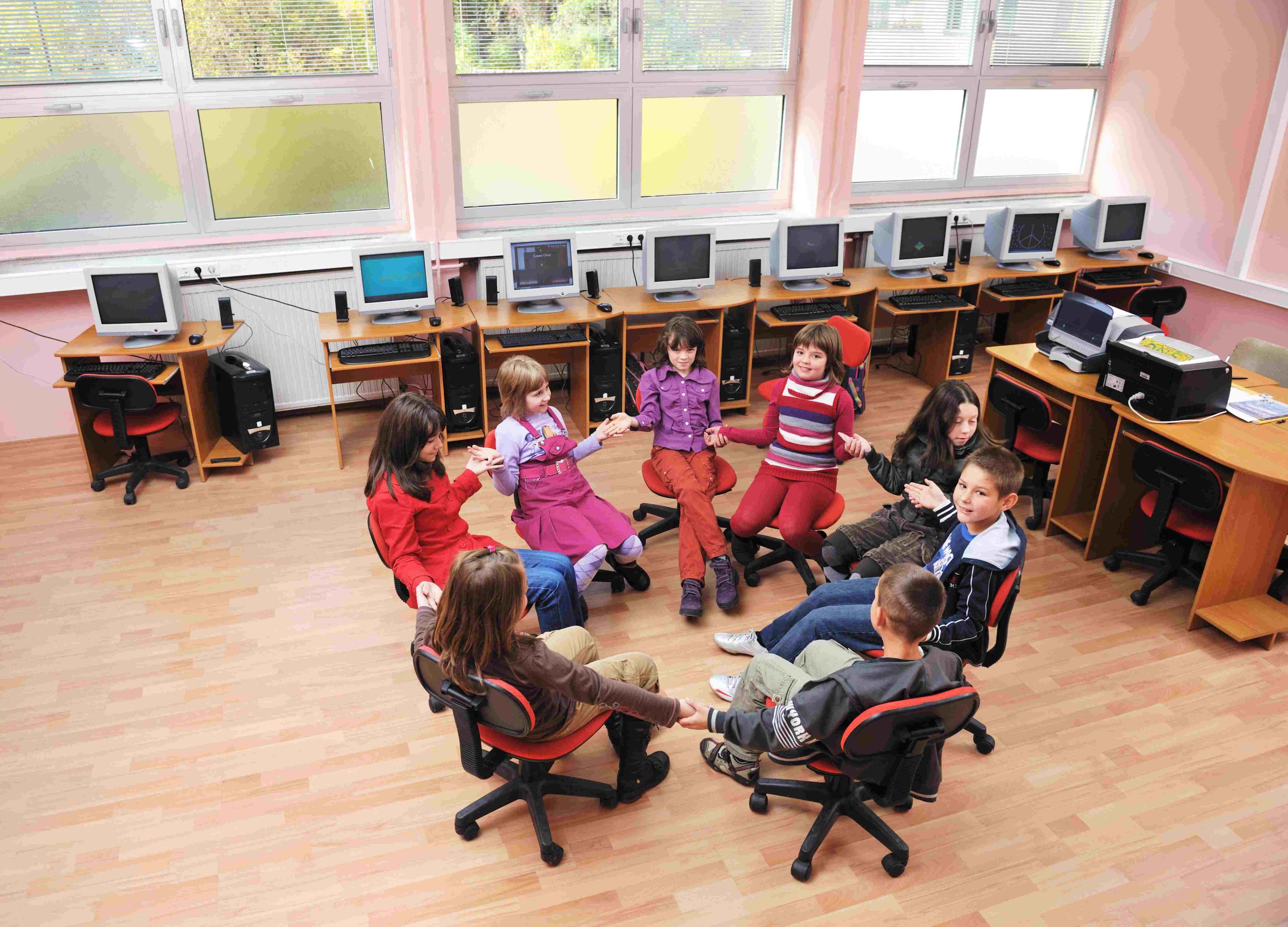
Creating an Inspiring Learning Atmosphere for Preschoolers
The learning atmosphere in a preschool setting plays a pivotal role in shaping the educational experiences of preschoolers. It encompasses the physical environment, social dynamics, and emotional climate, all of which contribute to a holistic and enriching learning journey. When carefully cultivated, a positive and inspiring learning atmosphere can ignite curiosity, foster a love for learning, and empower preschoolers to reach their full potential. In this article, we will explore the various elements that contribute to an exceptional learning atmosphere and their impact on the development of preschoolers.
A Welcoming Physical Environment
A welcoming and well-designed physical environment sets the stage for a positive learning experience. Here are key considerations for creating an inviting atmosphere:
1. Safe and Stimulating Spaces:
– Preschoolers thrive in environments that are physically safe and offer a variety of engaging spaces.
– Consider age-appropriate furniture, child-friendly materials, and open spaces that encourage exploration and movement.
2. Learning Zones:
– Designate specific areas for different types of learning activities, such as reading corners, art stations, sensory play areas, and quiet spaces.
– Clearly define and organize these zones to facilitate independent exploration and provide a sense of structure.
3. Natural Elements:
– Incorporate elements of nature, such as plants, natural light, and materials, to create a calming and inspiring ambiance.
– Nature-inspired aesthetics have been shown to enhance well-being and foster a connection with the natural world.
4. Organisation and Accessibility:
– Ensure materials, toys, and learning resources are organized and easily accessible for preschoolers.
– Labeling shelves and storage containers can promote independence and help preschoolers take ownership of their learning environment.
Nurturing Social Connections
The social dynamics within a learning atmosphere significantly impact the social and emotional development of preschoolers. Fostering positive social connections is essential. Consider the following:
1. Positive Relationships:
– Cultivate a warm and supportive teacher-pupil relationship, where preschoolers feel valued, respected, and cared for.
– Encourage peer interactions, cooperation, and empathy to create a sense of belonging and foster a positive classroom community.
2. Collaborative Learning:
– Provide opportunities for preschoolers to engage in collaborative learning experiences.
– Group projects, discussions, and shared problem-solving activities promote teamwork, communication, and the development of social skills.
3. Inclusive Practices:
– Celebrate diversity and create an inclusive atmosphere where all preschoolers feel welcome and respected.
– Promote understanding, empathy, and acceptance of differences through age-appropriate discussions and activities.
4. Conflict Resolution:
– Teach preschoolers constructive ways to resolve conflicts and manage disagreements.
– Encourage effective communication, active listening, and problem-solving skills, empowering them to navigate social challenges independently.
Emotional Well-being and Support
An emotionally supportive learning atmosphere provides preschoolers with a sense of security and promotes their emotional well-being. Consider the following strategies:
1. Emotional Literacy:
– Facilitate emotional expression and help preschoolers develop a vocabulary for their emotions.
– Incorporate activities that encourage self-reflection, empathy, and emotional regulation, such as storytelling, role-playing, and mindfulness exercises.
2. Responsive Teachers:
– Create an environment where teachers are attuned to the emotional needs of preschoolers.
– Responsive teachers offer comfort, guidance, and encouragement, fostering emotional security and trust.
3. Reflection Spaces:
– Provide dedicated spaces for preschoolers to reflect, relax, or engage in calming activities.
– These spaces can serve as retreats where they can self-soothe, recharge, or engage in independent activities that promote emotional well-being.
4. Emotional Intelligence:
– Integrate social-emotional learning into daily routines and activities.
– Develop emotional intelligence skills by addressing topics such as self-awareness, empathy, self-regulation, and building healthy relationships.
Engaging and Meaningful Learning Experiences
An inspiring learning atmosphere should offer engaging and meaningful learning experiences that captivate preschoolers’ interest and ignite their passion for learning. Consider the following:
1. Play-Based Learning:
– Emphasize the importance of play as a powerful vehicle for learning and development.
– Provide open-ended materials, imaginative play opportunities, and hands-on activities that spark curiosity and encourage exploration.
2. Multi-Sensory Experiences:
– Engage preschoolers’ senses by incorporating multi-sensory learning experiences.
– Provide opportunities for them to explore textures, sounds, smells, and tastes, enriching their learning journey.
3. Authentic Connections:
– Create connections between learning experiences and real-life situations.
– Help preschoolers see the relevance and application of their learning in their everyday lives, fostering intrinsic motivation and curiosity.
4. Individualized Instruction:
– Recognize the unique interests, strengths, and learning styles of each preschooler.
– Provide differentiated instruction, allowing them to pursue their interests and develop their skills at their own pace.
Encouraging Independence and Agency
A nurturing learning atmosphere empowers preschoolers to become independent learners and active participants in their educational journey. Consider the following:
1. Choice and Autonomy:
– Provide opportunities for preschoolers to make choices and exercise autonomy within appropriate boundaries.
– Offer a range of activities, materials, and learning paths, allowing them to take ownership of their learning.
2. Goal-Setting and Reflection:
– Encourage preschoolers to set goals, monitor their progress, and reflect on their learning.
– Promote self-reflection and metacognitive skills, fostering a growth mindset and a sense of accomplishment.
3. Problem-Solving Skills:
– Foster critical thinking and problem-solving skills by presenting open-ended challenges and encouraging creative solutions.
– Support preschoolers in identifying problems, brainstorming ideas, and evaluating different strategies.
4. Growth Mindset:
– Cultivate a growth mindset culture, emphasizing the importance of effort, perseverance, and resilience.
– Encourage preschoolers to embrace challenges, view mistakes as opportunities for learning, and celebrate their progress.
A nurturing learning atmosphere sets the stage for a transformative educational experience for preschoolers. By creating a welcoming physical environment, nurturing social connections, promoting emotional well-being, offering engaging learning experiences, and encouraging independence and agency, we can inspire a lifelong love for learning and empower preschoolers to become confident and curious learners. Let us embrace the power of a positive learning atmosphere to create a foundation for success and a lifelong passion for learning among our preschoolers.
Cultivating a Sense of Wonder and Exploration
A vital aspect of a captivating learning atmosphere is cultivating a sense of wonder and encouraging preschoolers to explore the world around them. Here are key strategies for fostering curiosity and exploration:
1. Inquiry-Based Learning:
– Embrace an inquiry-based approach to learning, where preschoolers are encouraged to ask questions, investigate, and seek answers.
– Support their natural curiosity by providing opportunities for hands-on exploration and inquiry-based projects.
2. Nature and Outdoor Experiences:
– Take learning beyond the classroom walls and incorporate regular outdoor experiences.
– Engage preschoolers in nature walks, gardening, observing plants and animals, and exploring the natural environment, fostering a connection with the natural world.
3. Provocations and Open-Ended Materials:
– Create provocations that spark curiosity and invite exploration.
– Offer open-ended materials such as loose parts, blocks, art supplies, and natural materials, allowing preschoolers to manipulate and create based on their interests and ideas.
4. Science and STEM Activities:
– Introduce science and STEM (Science, Technology, Engineering, and Mathematics) activities that promote hands-on exploration.
– Engage preschoolers in experiments, building challenges, problem-solving tasks, and engineering projects to develop their scientific thinking and problem-solving skills.
5. Field Trips and Guest Speakers:
– Arrange field trips to local museums, parks, farms, or other places of interest.
– Invite guest speakers, such as scientists, artists, or community members, to share their expertise and inspire preschoolers with real-world experiences.
6. Storytelling and Literature:
– Utilize storytelling and quality literature to spark preschoolers’ imagination and curiosity.
– Choose books, stories, and narratives that introduce new ideas, cultures, and perspectives, encouraging them to explore and ask questions about the world around them.
7. Reflection and Documentation:
– Provide opportunities for preschoolers to reflect on their learning experiences and document their findings and discoveries.
– Encourage them to share their thoughts, observations, and questions through drawings, journals, photographs, or group discussions.
8. Sustained Projects and Investigations:
– Support long-term projects and investigations that allow preschoolers to delve deeper into topics of interest.
– Nurture their sense of ownership and curiosity by revisiting and building upon their previous knowledge and experiences.
By cultivating a sense of wonder and exploration, we can ignite the innate curiosity within preschoolers and foster a lifelong love for learning. Encouraging them to question, investigate, and explore the world around them not only promotes intellectual growth but also nurtures their creativity, problem-solving skills, and a sense of awe and appreciation for the wonders of the world.
A captivating learning atmosphere is essential for preschoolers to thrive and develop a love for learning. By creating an inviting physical environment, nurturing social connections, promoting emotional well-being, offering engaging and meaningful learning experiences, encouraging independence and agency, and cultivating a sense of wonder and exploration, we can create an atmosphere where preschoolers are inspired, curious, and empowered. Let us embrace the power of a captivating learning atmosphere to ignite the flame of curiosity within our preschoolers, paving the way for a lifelong journey of exploration, growth, and discovery.
Overcoming Challenges in Creating a Positive Learning Atmosphere
While creating a positive learning atmosphere is crucial for the growth and development of preschoolers, it is not without its challenges. Let’s explore some common challenges and strategies to overcome them:
1. Limited Resources:
– Challenge: Limited resources can hinder the creation of an engaging learning atmosphere.
– Solution: Seek creative alternatives and repurpose materials. Collaborate with parents, local businesses, and the community to acquire additional resources. Focus on creating experiences that don’t necessarily require expensive materials but rather emphasize imagination, creativity, and hands-on exploration.
2. Time Constraints:
– Challenge: Time constraints can make it difficult to implement all desired activities and experiences.
– Solution: Prioritize essential elements that contribute to a positive learning atmosphere. Create a schedule that allows for flexibility and incorporates dedicated time for play, exploration, and reflection. Maximize the use of transition periods and integrate learning opportunities into daily routines.
3. Classroom Management:
– Challenge: Maintaining a positive learning atmosphere amidst diverse personalities and behaviors can be challenging.
– Solution: Establish clear expectations and classroom rules that promote respect, kindness, and cooperation. Implement positive behavior management strategies, such as praise, reinforcement, and redirection. Foster open communication with parents to ensure consistency between home and school.
4. Individual Differences:
– Challenge: Preschoolers come with unique learning styles, interests, and abilities.
– Solution: Embrace a differentiated approach to instruction and provide a variety of activities that cater to different learning needs. Offer choices and opportunities for individual exploration. Collaborate with parents and gather insights about their child’s interests and strengths to tailor learning experiences accordingly.
5. Emotional and Social Dynamics:
– Challenge: Preschoolers may experience emotional challenges or exhibit social difficulties that can affect the learning atmosphere.
– Solution: Foster a nurturing environment where preschoolers feel emotionally supported. Implement social-emotional learning programs to develop emotional literacy, empathy, and conflict resolution skills. Collaborate with parents and professionals to address specific emotional and social needs.
6. Limited Space:
– Challenge: Limited physical space can pose constraints on creating an ideal learning atmosphere.
– Solution: Maximize the use of available space by creating designated learning zones and utilizing flexible furniture arrangements. Optimize outdoor areas for learning experiences and seek opportunities to collaborate with local community spaces for additional learning opportunities.
7. Continuous Professional Development:
– Challenge: Teachers need ongoing professional development to enhance their skills in creating a positive learning atmosphere.
– Solution: Encourage teachers to engage in professional development opportunities, attend workshops, and collaborate with colleagues. Provide mentoring and coaching support to foster continuous growth and reflection. Create a culture of learning and professional growth within the educational institution.
Despite the challenges, creating a positive learning atmosphere is a worthwhile endeavor that can profoundly impact the development and growth of preschoolers. By acknowledging and addressing these challenges through proactive strategies and collaboration, we can overcome obstacles and create an environment that nurtures curiosity, fosters social-emotional well-being, and ignites a passion for lifelong learning.
While challenges may arise in the process of creating a positive learning atmosphere, they can be overcome with creativity, flexibility, and a commitment to the well-being and growth of preschoolers. By prioritizing their needs, fostering a sense of belonging and exploration, and engaging in continuous reflection and improvement, we can create a learning atmosphere that inspires and empowers preschoolers to become lifelong learners and curious explorers of the world.


